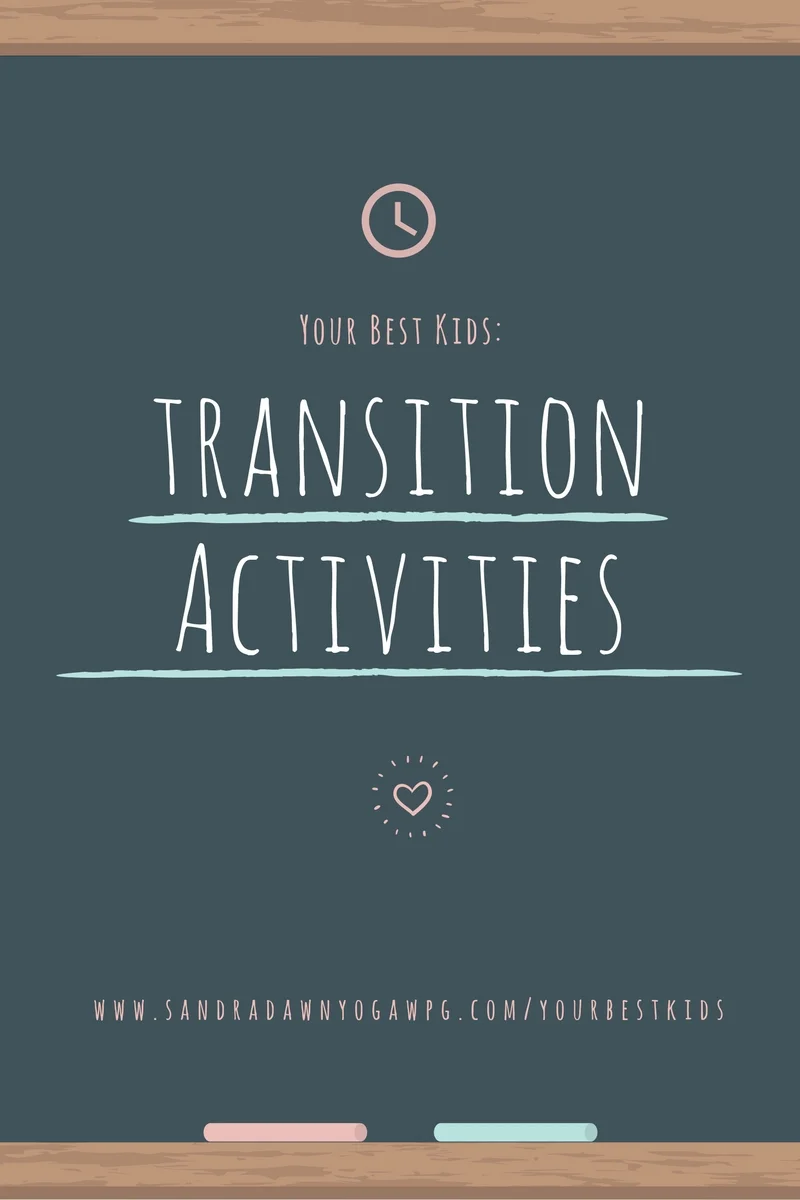Kids practising Yoga, and Adults practising Yoga look completely different. When adults attend a Yoga class, the routine is generally the same. Arrive at the Yoga space, ready to relax, move your body and quiet the mind. Unroll your mat and lay in savasana until the teacher begins class or perhaps spend some time in your favourite restorative pose. The point is, you arrive to your Yoga class prepared for a Yoga practice. You are in "the yoga zone" already, and likely looking forward to leaving the rest of your day behind (or at the very least trying to) while you practice for the next hour or so.
This is not necessarily the case for Kids, especially for those of them who struggle with transition.
So, what do I mean by "transition"? For the purpose of this post, I am referring to transition as the action of moving from one task, activity or mindset, to another - transitioning from one thing to the next. Someone who is easily able to transition between activities is using their executive functioning - part of the brain that helps us to plan, organise, execute tasks and regulate our emotions and behaviours. Children with FASD, Autism Spectrum Disorder or ADHD, may have challenges with executive functioning, and this can make transitioning very difficult. It's important to remember that if a child has difficulty with executive functioning, they may seem like they are being challenging, but really, they just need extra supports to make some day to day tasks more accessible to them.
What is a transition activity?
A transition activity is basically an activity that "takes up the space" between tasks and that can help to regulate a child's system to the next activity they are going to engage in. For example, lets go back to the adult heading to yoga class. Prior to arriving at the Yoga studio, they may be stuck in traffic, or get cut off by another driver. This may make them a bit upset or angry which is stimulating for your brain. Assuming they have no trouble with the executive functioning aspects of their brain, they should still be able to transition smoothly into yoga class and regulate or calm their system to the appropriate level of stimulation for their yoga practice. The children who struggle with transition will need more time to do this. When they arrive to the yoga space they may feel anxious because it's new to them, they don't know what to expect, or maybe they are upset because they were playing their video game in the car and now they aren't playing it. It would be completely unrealistic to then ask them to sit on their mat and start practising yoga. So, we need to give their bodies and brains a bit of extra time to get ready for this.
3 Idea's for Transition Activities:
(Note: it is often helpful to use visual timers or lots of verbal reminders re: time left, for these types of activities so the children know how long they have. You may want to choose just one activity in a 1-1 setting, or if you have a group class you may have a couple of activity stations set up so the children can choose which one works best for them that day.)
1. "Toe-ga"
This is an activity that can be set up so that as the kids come into the space they can engage with it and with the other children. This task requires some focus, while engaging the large muscle groups, but is not too difficult. It is also something that kids can join in when they are ready and doesn't have a "start" and "finish".
How to set up "Toe-Ga":
Set up muffin tins, plastic bowls or plastic cups (just make sure they aren't too light so they don't fall over), around the space.
Line each bowl, cup or individual muffin cups with a colour of paper.
Have small piles of pom-poms in colours that match the coloured paper around the tray/bowls/cups.
Kids use their toes - while balancing on one foot which engages the muscles - to sort the pom-poms into their correct holder.
Example of "Toe-Ga" here.
2. Your Perfect Yoga Place
This activity is great for kids who like to draw, paint or create. Have each child draw/paint/collage etc. the perfect place to practice yoga. Have them use their imagination to create the most amazing place they would like to do their yoga in. If you have the same child or group of children for multiple weeks, let them know you DON'T want them to finish in one sitting, and that they are going to work on it every week they come back. Sometimes it can cause children anxiety if they feel like they don't have enough time to finish a task they have started.
3. The Four B's of Self-Control
This would be an activity to do with a child 1-1 or with an entire group of kids, perhaps right before they need to be sitting. This activity was created by Barbara Gini and is meant to help children calm their systems. See the visual here.
If you are interested in Yoga Programming for your child, check out the Your Best Kids page - the first group session will be starting in November, so if you have a child that you think would benefit from this type of programming, contact me soon!

